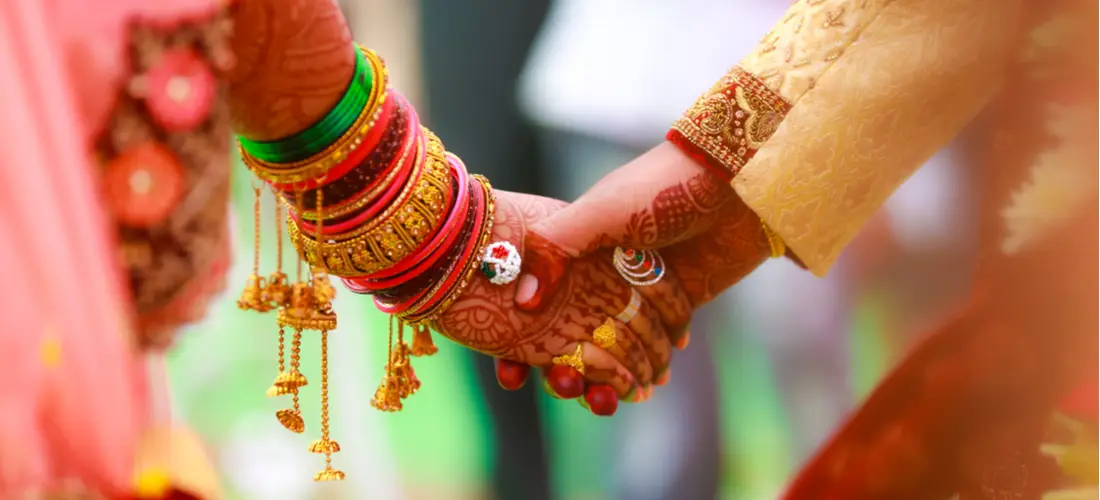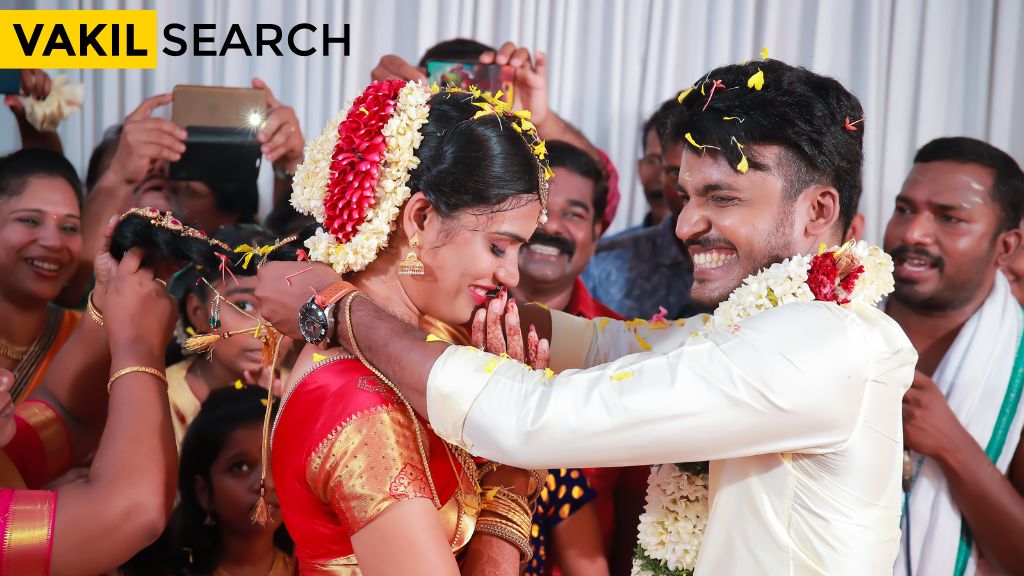This informative blog will educate you about the ins and outs of the prohibition of childhood marriage in India. Continue reading to learn more about the same.
Overview:
Childhood Marriage – In Indian society, child marriage is not a new occurrence. It has been around for ages in India. Poverty, a lack of education, and instability are among the most prominent factors for child marriage. However, child marriage has a variety of implications. These include psychological and societal implications like denial of the right to education, early motherhood, an impediment to both boys and girls physical and mental development, and so on. Child Marriage Act.
Child marriages have been shown to be more harmful to females than to boys. Girls are expected to adjust to large life changes at a young age. Girls are mostly subjected to crimes like marital rape and domestic abuse.
To avert the painful repercussions of child marriage in India, the British passed the Child Marriage Restraint Act of 1929, in an attempt to destroy the culture of child marriage in India. The Act was, however, abolished and replaced by the Prohibition of Child Marriage Act of 2006. The purpose of this article is to examine the many facets of India’s prohibition on underage marriages.
Download Child Marriage Act 2006 Pdf Format
child marriage actProhibition of Child Marriage (Amendment) Bill 2021
21 December 2021 was the date when the Prohibition of Childhood Marriage Amendment Bill was introduced. The Bill amended the Prohibition of Child Marriage Act 2006, increasing the age at which girls can marry from 18 to 21. It also amended related marriage laws such as the Hindu and special marriage acts.
Origin of the Childhood Marriage Act
Well, child marriages have a very long history in Indian society. They were common in India much before the colonisation of the nation. However, in order to abolish child marriages in India, the Child Marriage Restraint Act was implemented in 1929. The Act established an age restriction of 14 years for females and 18 years for boys.
The Act had several loopholes. First, the age restriction for girls as well as boys was quite low. Children can’t be expected to have grown a mature intellect as well as the physical health required for marriage registration.
The ramifications of the marriage remained. Furthermore, the penalties under the Act were insignificant. As a result, the statute was revised after independence in 1978 to raise the age restriction. The age restriction for girls has been raised to 18 years and 21 years for boys.
The Act has yet to be shown successfully in preventing underage marriages in India. One of the primary reasons was the Act’s penalties. The 2006 Prohibition of Child Marriage Act was enacted to make revisions under the legislation, with higher penalties for violators. Further parts have gone through the pertinent elements of the Act of 2006.
Relevant Provisions of the 2006 Child Marriage Act
Listed below are the relevant provisions of the 2006 Childhood Marriage Act (Child Marriage Act):
-
Section 3
It states that whether a child marriage was performed before or after the Act’s implementation, it is voidable at the discretion of the party to the wedding who was a minor during the time of the ceremony. If a district court is pleased with the application, it may issue an annulment decree.
-
Section 4
It states that the district court has the authority to issue an interim order for the female child’s maintenance while issuing a decree under Section 3, in order to guarantee that the girl child can meet her requirements. The court may even appoint guardians for the male kid if it is determined that he is a juvenile under the Majority Act of 1875.
-
Section 6
It states that if a child is conceived as a result of child marriage, regardless of whether a judgement of annulment has been issued under Section 3 or not, the child is considered legitimate for all purposes.
-
Section 9
It specifies the penalty for an adult male who performs a child marriage, which is severe imprisonment for a term not exceeding 2 years or a fine of a maximum of ₹1,00,000, or maybe both.
-
Section 10
It states that anybody who executes, conducts, directs, or lends a hand in any child marriage is penalised by imprisonment for a term of a maximum of 2 years as well as a fine of a maximum of ₹1,00,000.
-
Section 11
It states that anybody who encourages or carelessly fails to prevent the solemnization of child marriage is penalised by harsh imprisonment for a term of a maximum of 2 years as well as a fine of a whopping ₹1,00,000. The provision also makes attending and engaging in child marriage illegal. Women are excluded from incarceration under the provision’s proviso.
-
Section 12
It states that if a child under the age of 18 is seduced out of the custody of his or her legal guardian, is coerced, compelled, or tricked, or is trafficked or exploited for immoral purposes, and the such kid is forced to solemnise a child marriage, the marriage is void from the start.
-
Section 16
It allows the State Government the appointment of the Child Marriage Prohibition Officer, as well as the officer’s responsibilities and powers. The duties include preventing the solemnization of child marriages in areas under their jurisdiction, gathering evidence for the prosecution of offenders under the Act, raising awareness about the consequences of child marriage, gathering statistics on child marriage in areas under their jurisdiction, and so on. The official may also petition the district court for the annulment of any child marriage.
Objectives of Prohibition of Child Marriage (Amendment) Bill 2021
The Prohibition of Child Marriage (Amendment) Bill 2021 was introduced in the Lok Sabha (lower house of the Indian Parliament) with the following objectives:
- To strengthen the legal framework to prevent child marriages in India.
- To make registration of marriages mandatory, including child marriages, to ensure that they can be detected and annulled.
- To amend the 2006 Act to Prevent Child Marriage to include provisions related to child marriages through electronic means, including social media platforms.
- To increase the punishment for those involved in solemnizing child marriages, including parents and guardians of the child, to act as a deterrent
Childhood Marriage: Annulling a Child Marriage
The Prohibition of Child Marriage Act 2006 provides for the annulment of child marriage, which means that the marriage is declared void ab initio; it is deemed to have never taken place. Annulling a child marriage is important as it can help protect the child’s rights, particularly the right to education and health, and prevent them from being subjected to exploitation and abuse.
Factors of Childhood Marriage

Punishment Under the Child Marriage Act
-
-
Punishment for Male Adults under the Age of 21 Marrying a Child
-
Anyone above the age of 18 and under the age of 21 who throws themselves into child marriage is penalised by simple imprisonment for a maximum of 15 days, a fine of a maximum of ₹1,000, or sometimes both.
-
-
Punishment for Male Adults above the Age of 21 Marrying a Child
-
Marriage shall be penalized by simple imprisonment for a maximum of 3 months and a fine if a male over 21 years contracts a child.
-
-
Punishment for Solemnising a Child Marriage
-
Anyone who performs conducts or directs child marriage faces simple imprisonment for a maximum of 3 months and a fine unless he can demonstrate that he had cause to think the wedding wasn’t a child marriage.
-
-
Punishment for a Guardian or Parent Involved in a Child Marriage
-
Anyone in charge of the child, whether as a guardian, parent or in any other legal or unlawful role, who:
- Supports the marriage;
- Allows it to be solemnised;
- Fails to stop it from getting solemnised shall face a maximum of 3 months imprisonment as well a fine.
With the exception that no woman shall be imprisoned. Until and unless the opposite is shown, it must be presumed that when a minor enters into a child marriage, the individual in charge of the minor has carelessly failed to stop the wedding from getting solemnised.
Recent Developments of the Child Marriage Act
Childhood Marriage – The Prohibition of Child Marriage (Amendment) Bill 2021 was introduced in the Lok Sabha on 8 February 2021 and was passed by the house on 2 March 2021. The Bill has been referred to the Rajya Sabha (upper house of the Indian Parliament) for consideration and passage.
The Bill has been widely welcomed by child rights activists and organisations working to prevent child marriages in India. The proposed amendments are expected to strengthen the legal framework for preventing child marriages and protecting children’s rights in India.
Conclusion
For generations, Childhood Marriage have been common in India. The main reasons for the taboo’s long-standing presence include cultural characteristics, religious components, and a lack of education. Child marriages are a serious worry for the country’s growth since the results have been shown to be devastating for kids, particularly females.
As a result, the 1929 Child Marriage Restraint Act was adopted as a policy to outlaw the solemnisation of child marriages in India, and it was later superseded by the 2006 Prohibition of Child Marriage Act. This particular act criminalises the backing of child marriage and allows for imprisonment for a period not exceeding two years, as well as a fine of a maximum of ₹1,00,000 in some circumstances.
If you need any such assistance or further information regarding the prohibition of child marriage act, you can freely contact the legal experts at Vakilsearch. We are always ready to assist you and strive to resolve every issue of yours.
FAQ on Child Marriage Act
What Are the Child Marriage Acts in India?
Two main acts are related to child marriage in India - the Child Marriage Restraint Act of 1929 (also known as the Sarda Act) and the Prohibition of Child Marriage Act, 2006. The Prohibition of Child Marriage Act, 2006 repealed and replaced the Child Marriage Restraint Act 1929.
What is the Prohibition of Child Marriage Act 2022?
There is no Prohibition of Child Marriage Act, 2022. As of February 2023, no such bill has been introduced in the Indian Parliament.
When Did the Child Marriage Act Start?
The Prohibition of Child Marriage Act, 2006, was enacted on 1 November 2007.
What Is the 1978 Child Marriage Act?
No specific child marriage Act in India was enacted in 1978. TheProhibition of Child Marriage Act, 2006 replaced the Child Marriage Restraint Act 1929.
What Is the Punishment for Child Marriage?
Under the Prohibition of Child Marriage Act, 2006, anyone who performs, conducts or abets a child marriage can face imprisonment of up to two years and a fine of up to ₹1 lakh. The Act also provides for the annulment of child marriage and the protection of the child's rights.
What is the Child Marriage Restraint Act of 1929, and what was the objective of introducing it?
The Child Marriage Restraint Act of 1929 (also known as the Sarda Act) was enacted by the British Government in India to prevent child marriage. The objective of introducing the Act was to prohibit the marriage of underage girls (below 18 years) and boys (below 21 years). The Act also provided for punishment for those who performed, conducted or abetted child marriages.
Which State Has the Highest Child Marriage Rate in India?
According to the National Family Health Survey (NFHS-5) conducted in 2019-20, the state with the highest prevalence of child marriage in India is Bihar, with 40.5% of women aged 20-24 years getting married before the age of 18. Other high-prevalence states include Rajasthan, Uttar Pradesh, and West Bengal.
Read more,
- Court Marriage Procedure In India
- Online Marriage Registration Process and Fees In India
- Special Marriage Act Registration










